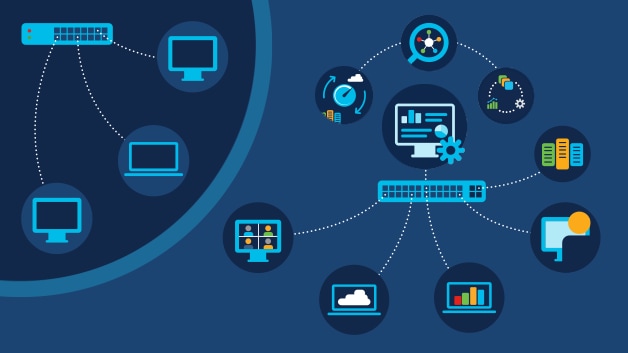What are the differences between managed and unmanaged switches?
Managed switches and unmanaged switches differ in three areas: capabilities, security, and cost.
- Capabilities: Unmanaged switches immediately start forwarding traffic once users have plugged them in. They have no features besides what they need to negotiate transfer speeds and to determine each link's duplexing type. Managed switches can offer a huge number of features that can be configured by IT professionals, thus permitting a diverse array of deployment possibilities. These capabilities allow for optimization of network performance and availability.
- Security: Network security includes protection from and detection of threats to data and operability. Managed switches provide security settings that can be configured to protect the network and to help identify threats. Unmanaged switches do not offer security capabilities.
- Cost: For some users, cost is a significant choice driver. Unmanaged switches are cheap, as well as very simple to run. Managed switches, with all their additional capabilities, cost more than unmanaged switches. They also require more expertise to provision and manage, meaning added costs for staff with the skills to maintain the network
How should I choose between managed and unmanaged switches?
Unmanaged switches are most often seen in very small, uncomplicated networks with only a dozen or so devices connected and without critical requirements for security and availability.
Managed switches, with the flexibility and control they provide, are a must for networks where reliability and security are critical. Typically, such networks power enterprise-level businesses, government agencies, universities, and healthcare organizations.
While managed switches cost more than unmanaged switches, the range of models available mean that there are different levels of complexity and cost for businesses of all sizes.
A third type of switches, called smart managed switches, offers a compromise between cost and features. These switches are suited for small businesses that have limited budgets but need better security protection and want to improve their networks' performance.
